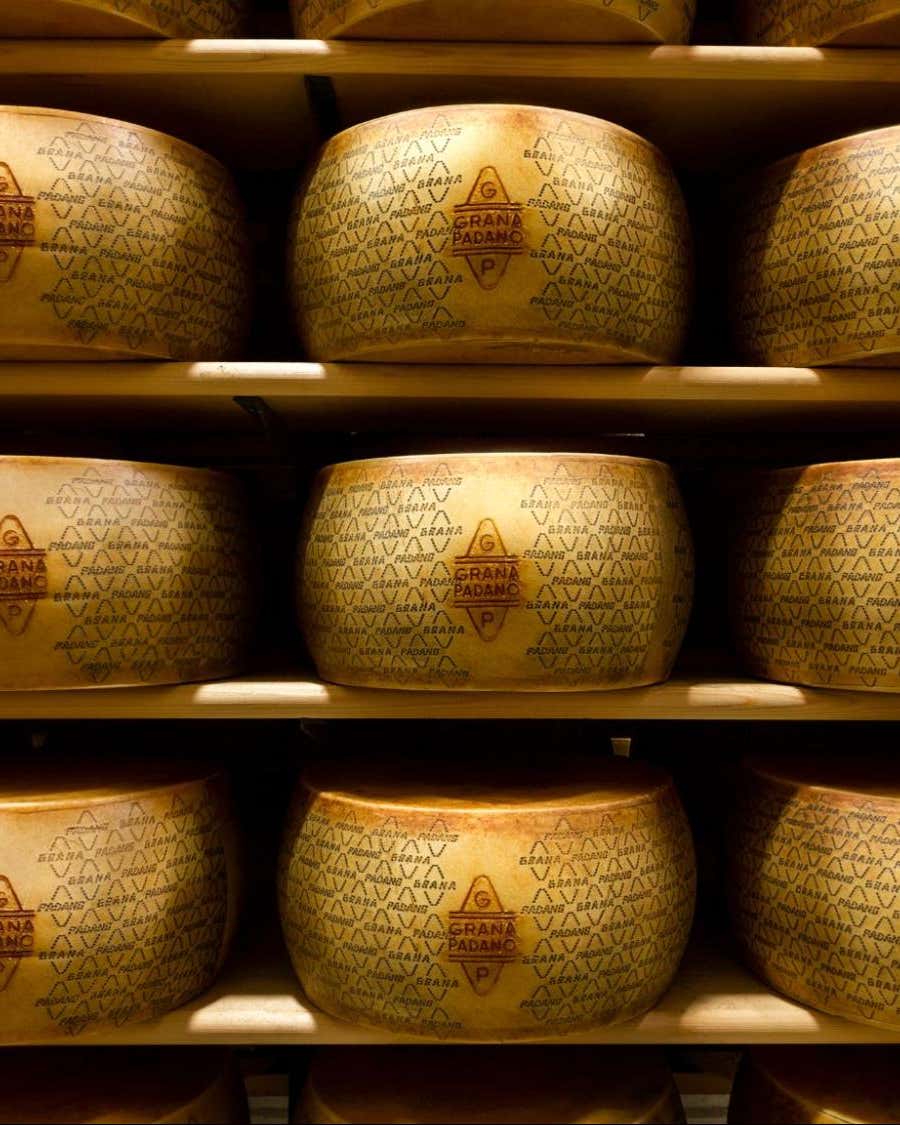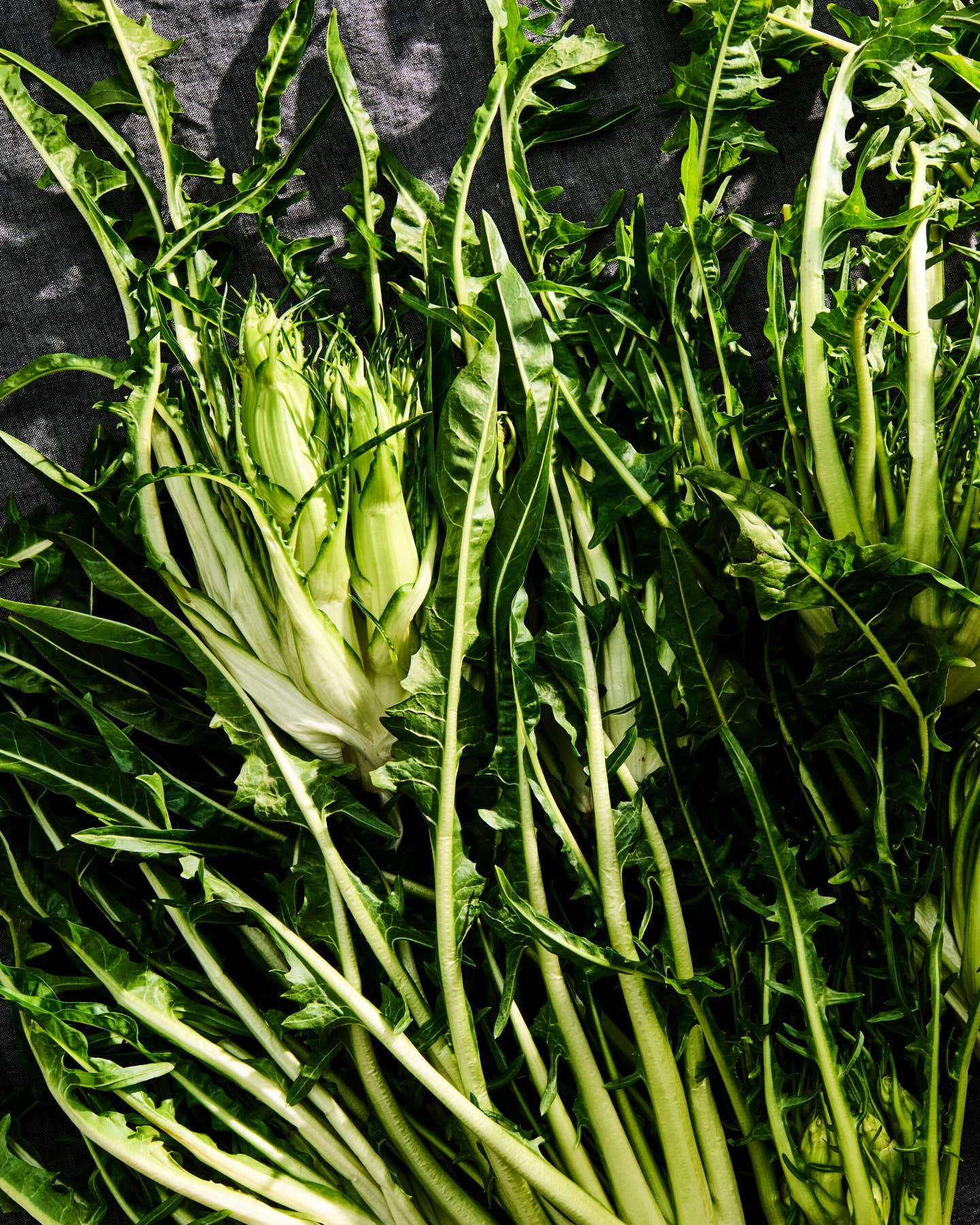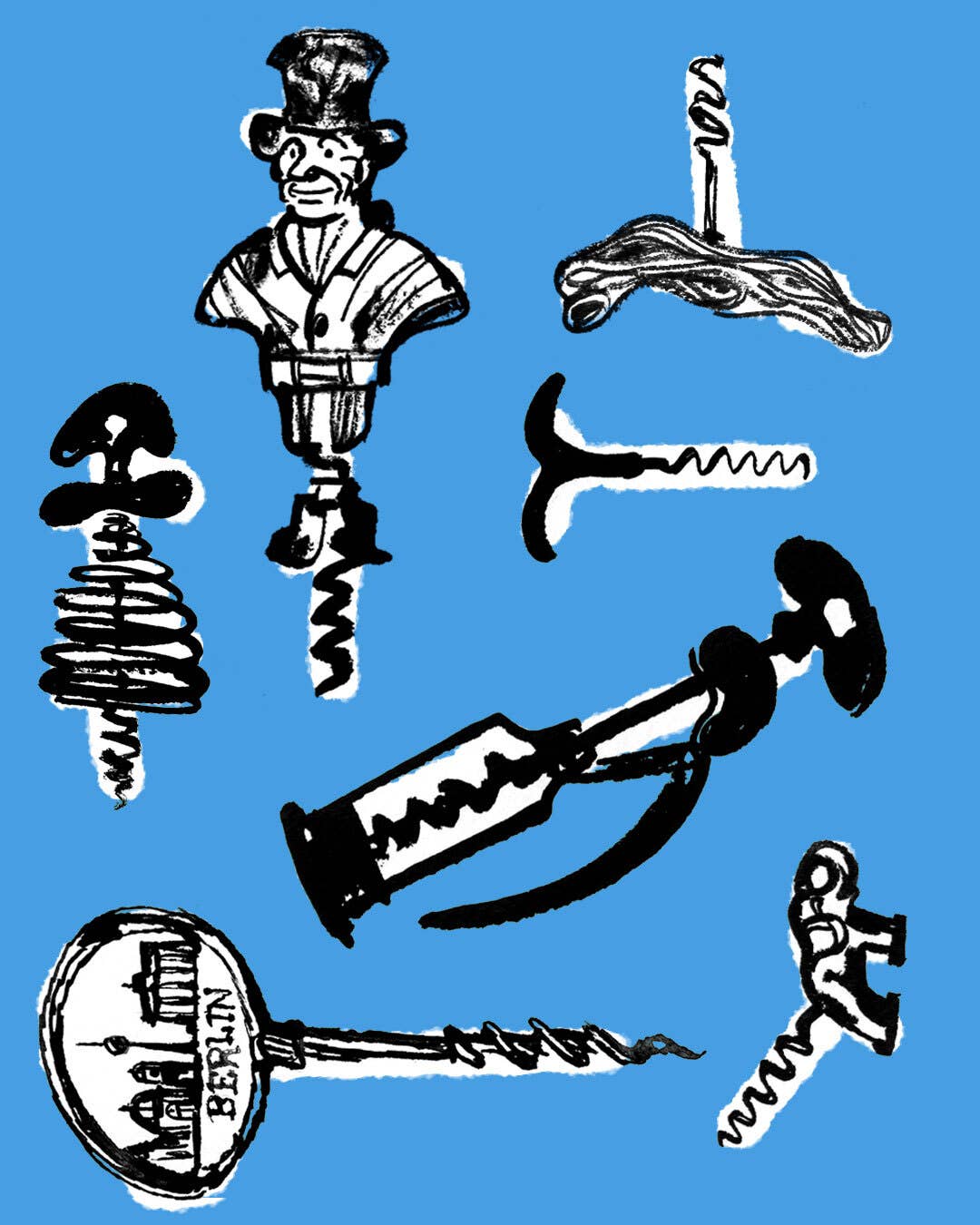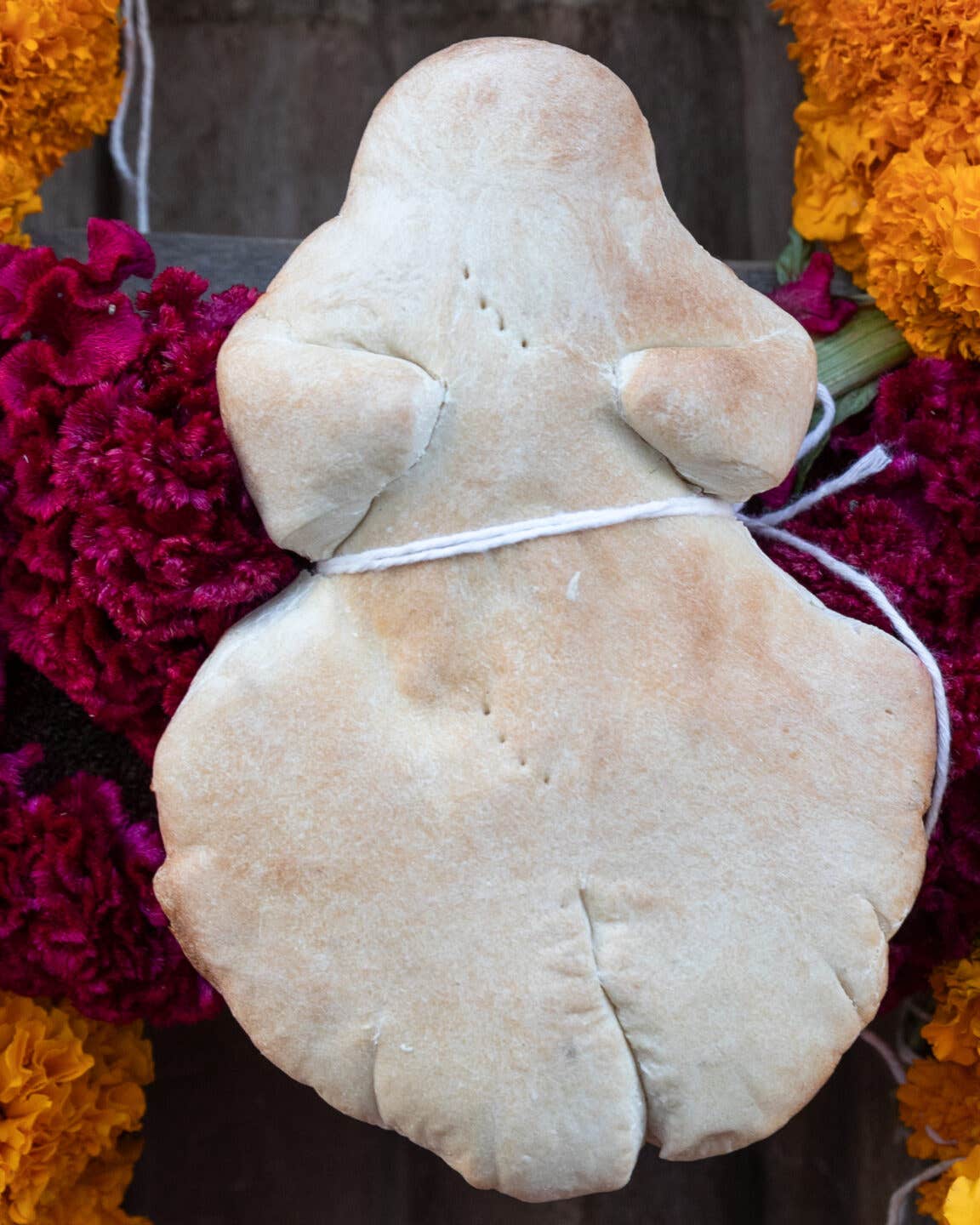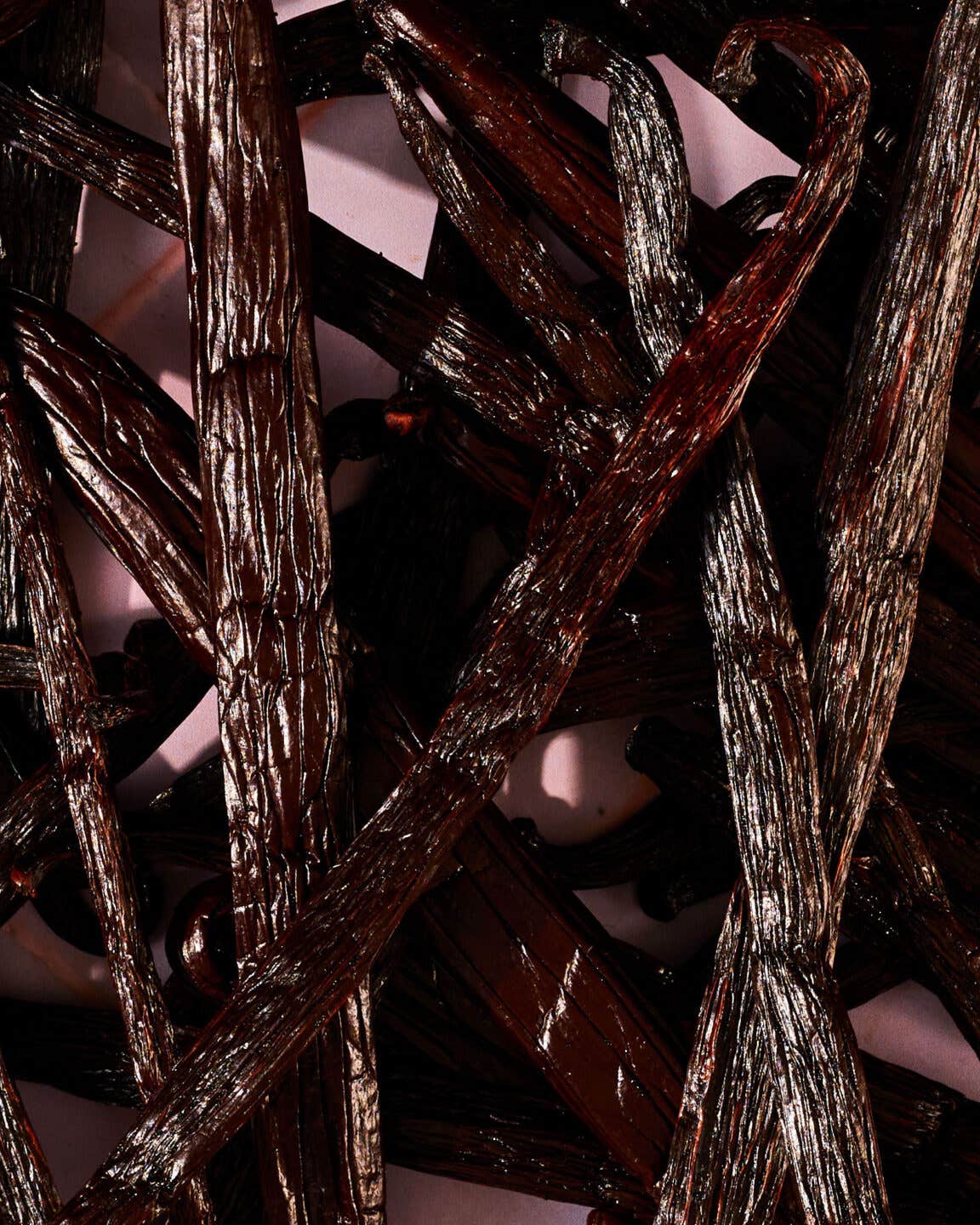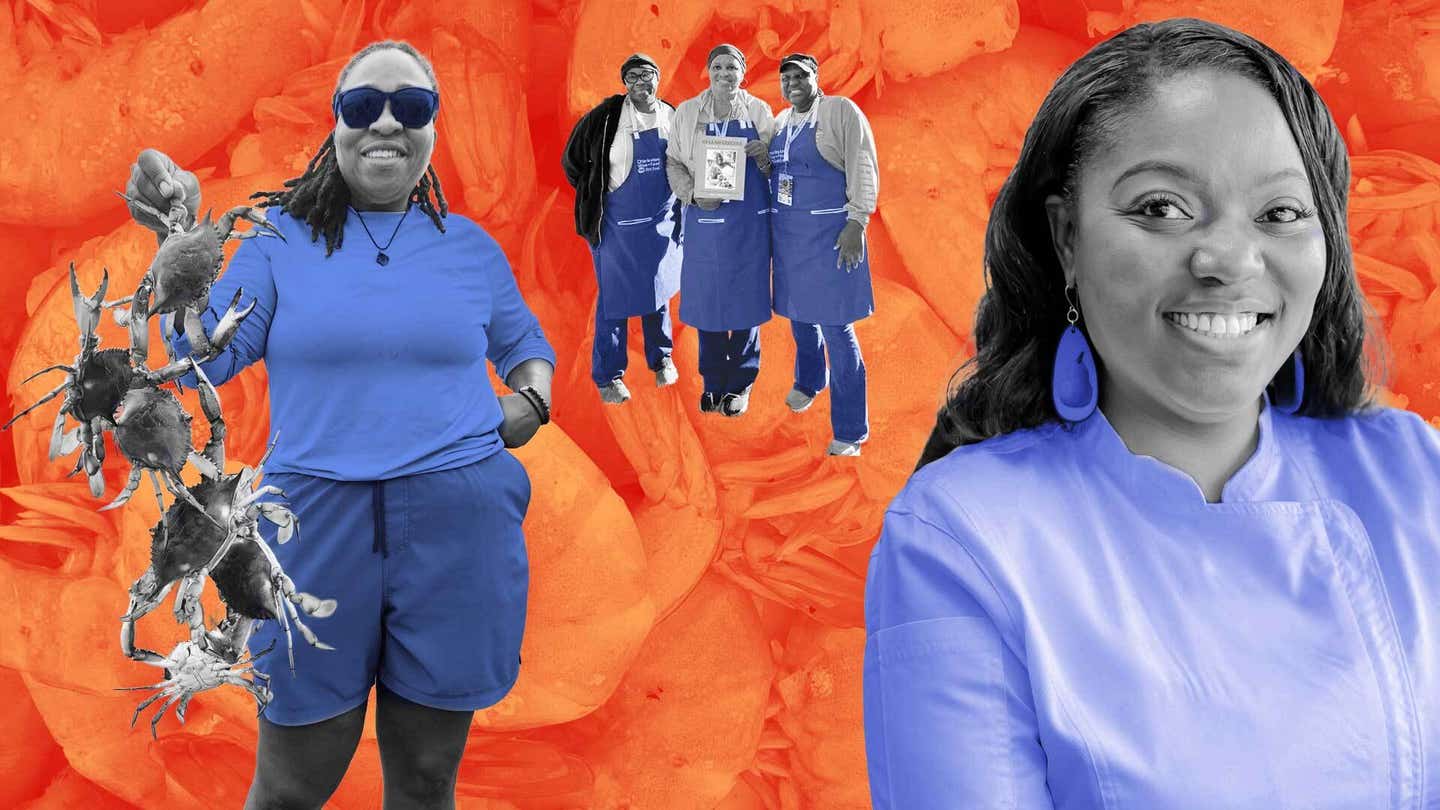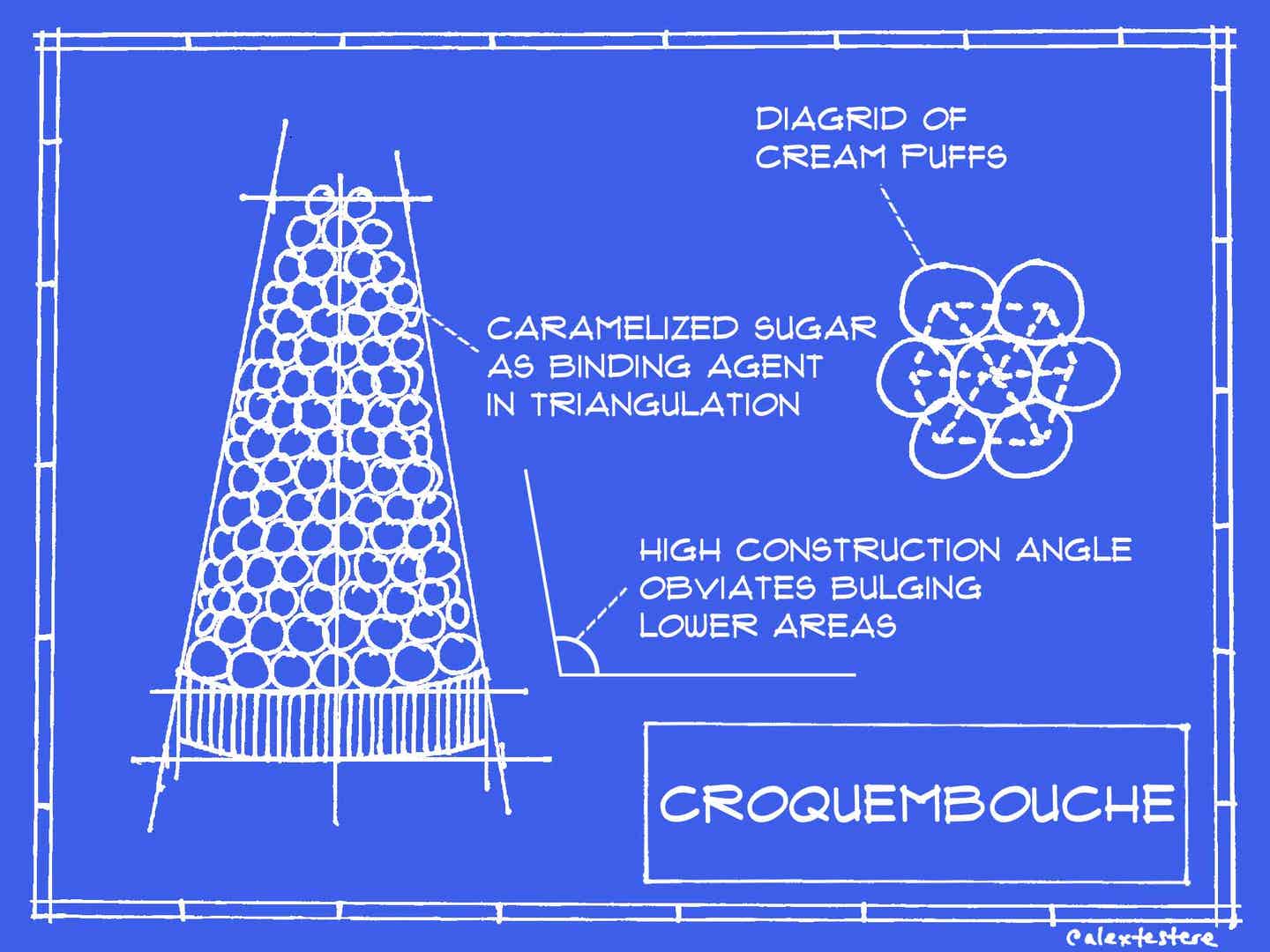
The Structural Soundness of Your Favorite Desserts, According to Architects
Baklava? Cannoli? Cronuts? Great sweets all, but how do they hold up under pressure?
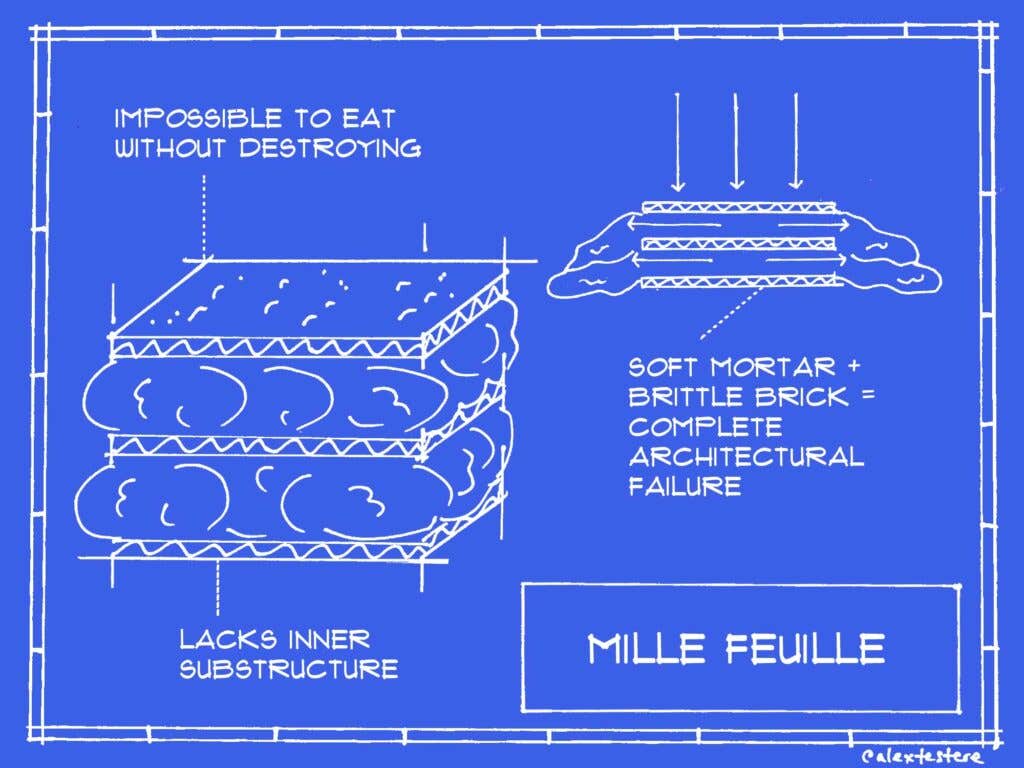
Marie-Antoine Carême, one of the most influential chefs of all time, famously said, “The most noble of all the arts is architecture, and its greatest manifestation is the art of the pastry chef.” This son of a stone mason grew up to be the Bernini of the banquet table, and made high art out of elaborate pièces montées, which are essentially edible architectural structures made from the elements of dessert. Just a few designs from his book The Royal Parisian Pastry Cook and Confectioner: A Hermitage on a Rock, A Turkish Pavilion, A Parisian Arbor, A Grand Chinese Summer-House.
If pastry is the finest expression of architecture, then what would an architect think about some of the world’s finest…as architecture? With that question in mind, I asked James Biber, FAIA, founder and partner of Biber Architects, and Stas Zakrzewski, Marianne Hyde and Deniz Secilmis of Zakrzewski + Hyde Architects to weigh in on the structural integrity, engineering prowess, and aesthetic appeal of a range of desserts, from Carême’s historic croquembouche to the modern-day Cronut™.
Croquembouche
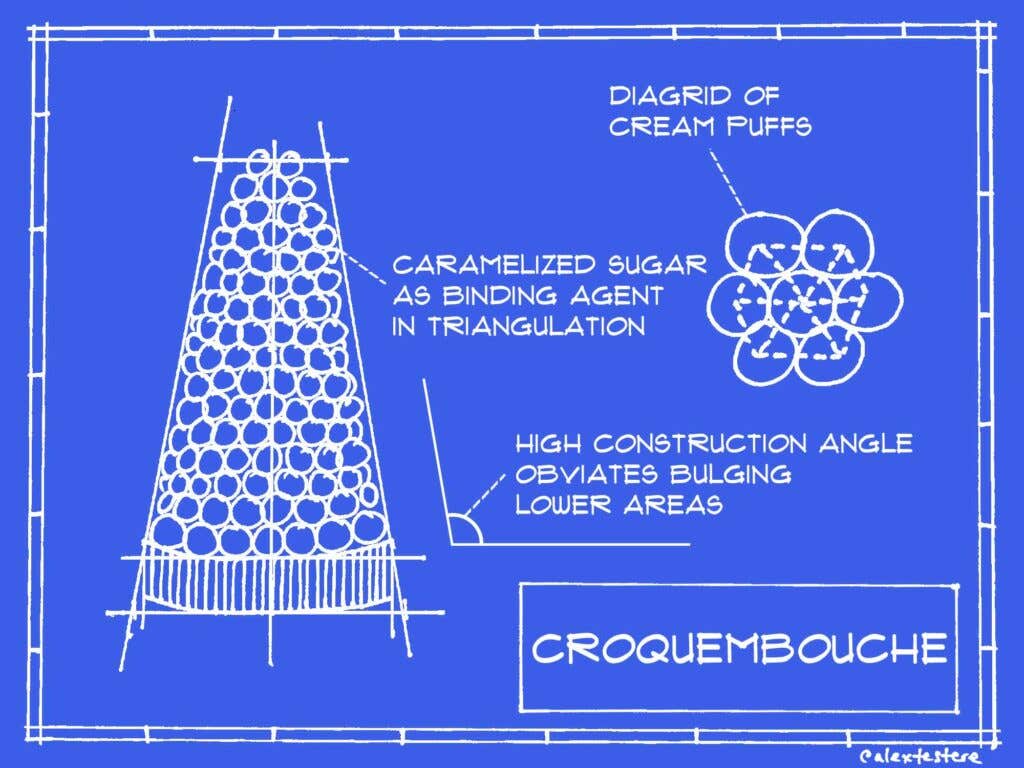
This pastry tower, a creation of Carême himself, is made from cream puffs that are attached to a conical base using caramelized sugar as adhesive. "The whole point is the bottom-most pieces act as support for the pieces above," says Francisco Migoya, head chef at Modernist Cuisine. "It's important that as the croquembouche goes higher and higher, it gets lighter and lighter. And as you're dipping the filled cream puffs in the caramelized sugar, you have to attach them to each other with a little bit of that sugar—it's like the glue that keeps them together."
The Architects Say
Biber: If Antoine Carême was right, the Gherkin in London should really be called the Croquembouche.
Both are typical exoskeleton concepts, which in the case of the Gherkin is a "diagrid" of steel, and in the croquembouche is, of course, the close packing of cream puffs. The outward thrust, which would cause the lower areas to bulge outward and collapse, is obviated by the high angle of the construction (and the caramel, which acts in tension binding the pastry puffs which are the compression elements). I am assuming a hollow center which is what makes it interesting as architecture, otherwise it is just a tall pile of rocks! Ed note: Not quite; a croquembouche is usually built around a cone, but close enough.
Zakrzewski: As a child, I remember making this at home. Maybe that is what made me think of being an architect! It is also our personal favorite as my partner [Marianne Hyde] and I chose it as our wedding cake when we got married. Each of the round cream puffs creates a perfect structure with caramel acting to bind it all together. Structurally, it is a very sound concept based on triangulation. One of the first rules I was taught as an architect was about structure and triangulation. If a structure is triangulated, it will work. In this case, the caramel acts as glue binding and connecting it all together.
Carême was incredible in that as he looked at these concepts, and the forces, triangulating down is the most effective way. That’s why it can be built up quite high, and within the little balls you can eat, you have a soft center, and the caramel that runs around these balls is the glue or cement that holds this whole thing together. It’s an amazing structure.
Cannoli
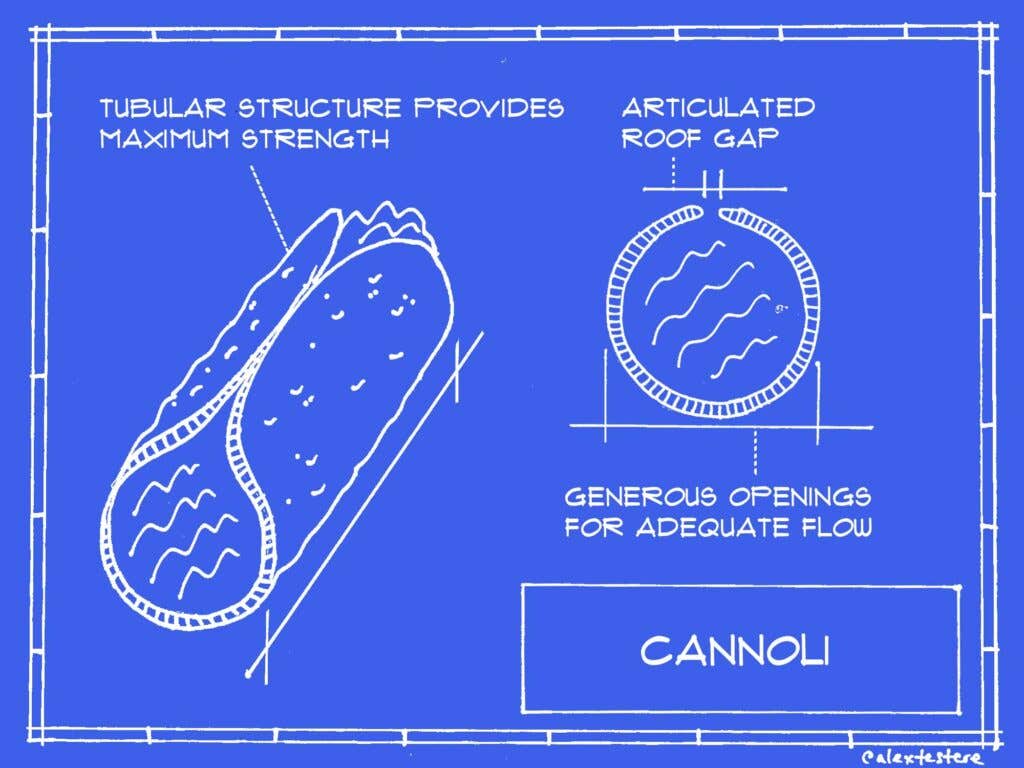
This Italian pastry is pretty straightforward—a deep fried dough shell that's wrapped around a mold during frying to retain its tubular shape, then filled with ricotta cream. "The tube is the strongest structure you'd find," says Migoya. "Just keep the tube dry as long as you can before you fill it."
The Architects Say
Biber: The cannoli completely solves the big problem of the new Oculus by Santiago Calatrava. Two problems if you count the cost, which is $4 billion for the Oculus and about one-billionth of that for a cannoli.
The rigid shell, with the beautifully articulated slot along the "roof," is just like the skylight in the Oculus, and more importantly the generous, elegantly shaped ends are a brilliant beginning and end. The Oculus has comically small, tiny little doors at each end leading to the enormous over-inflated interior space. It is like entering a church through a cellar hatch.
The cannoli is self-explanatory; it makes it clear exactly how one should begin eating (from the ends) building the filling/shell ratio up to the middle, then proceeding to get back to the cream we really care about at the end.
Hyde: Think of all the pipes carrying water, gas, etc. that run beneath the streets of any city or developed area. Pipe construction was introduced to us by the ancient Babylonians as an efficient way to carry fluids. The filling of the cannoli may not be liquid, but the pipe-shaped pastry shell creates a protected environment for the cannoli cream to remain intact and not spill all over the table.
Soufflé
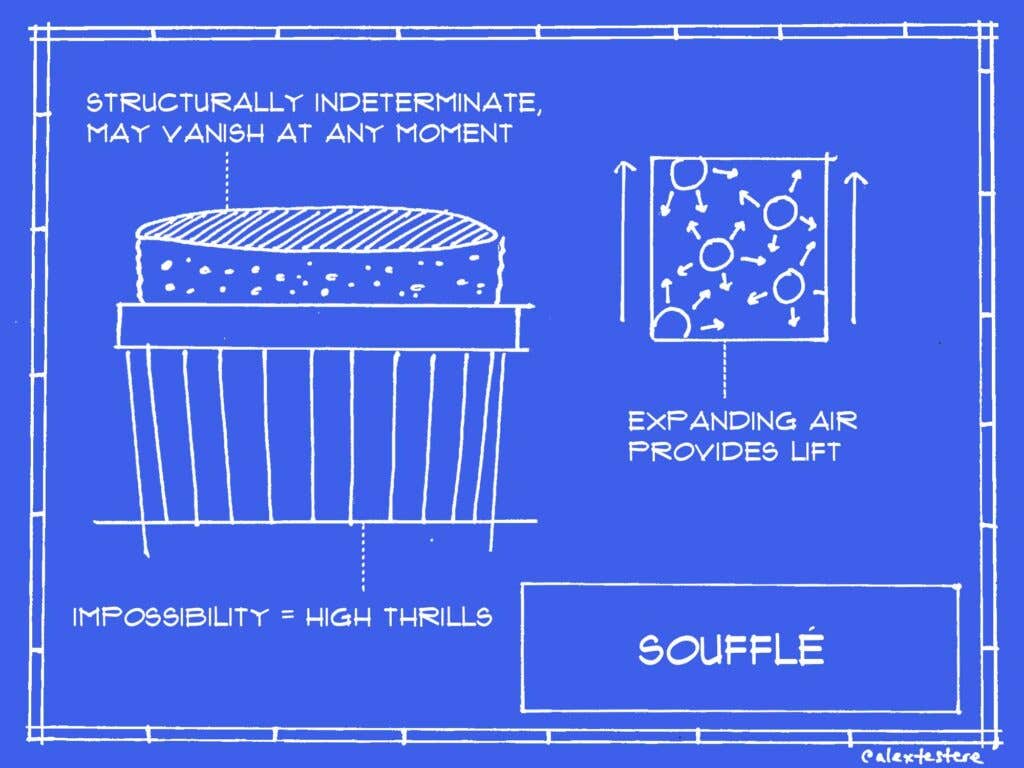
A French dessert made by folding stiff beaten egg whites into a batter, which is then spooned into a buttered ramekin and baked. The heat expands the air bubbles in the egg whites, which makes the dessert puff up, i.e. soufflé (which means breath in French). It deflates as it cools—hence soufflé's reputation as a fleeting pleasure. "It's so ephemeral, it's like a pop up tent," says Migoya. "It's not meant to be forever."
The Architect Says
Biber: The soufflé is as ephemeral and evanescent as the Blur Building by Diller Scofidio, and as difficult to carry off. A building, or a pastry, made almost entirely of air and water vapor is a tour de force and a temporal pleasure. Both are also practically impossible, which is part of the thrill they evoke.
These are not buildings or pastries in the typical sense; they disappear in an instant and leave barely a trace. While this is often true of pastry (well, good pastry, anyway) it is rarely true of buildings. They are, as an engineer once said to me, “structurally indeterminate.” Not much for holding things up, but what would the world be without them.
Mille-feuille

Mille-feuille literally means a thousand sheets, which refers to the extremely flaky layers of puff pastry that's used in this French dessert. The most basic version involves three tiers of puff pastry sandwiching two layers of pastry cream, with fondant glaze or confectioner's sugar on top.
“Structurally, it’s a little easier than croquembouche because what we have is layers,” says Migoya. “The challenge is you have firm, crispy puff pastry and a soft creamy center. How do you cut through the pastry without displacing the pastry cream below it? If you let it sit in the fridge a couple of hours it will be soft enough to get a clean cut. The problem is you get a soggy puff pastry, and you never want a soggy puff pastry. Crispness to the puff pastry is crucial.”
The Architects Say
Biber: Mille-feuille is a complete failure as architecture, like building a wall with squishy mortar that never dries and brittle brick that crumbles when touched. It is such a failure that this pastry, which I have loved my whole life, is impossible to eat without at the same time destroying it.
Zakrzewski: Similar to high rise buildings, there is a sense of repetitiveness and rigor to this pastry. The lack of an inner substructure to strengthen the layers results in overall structural instability which allows the pastry cream to be forced outside.
Jello Mold
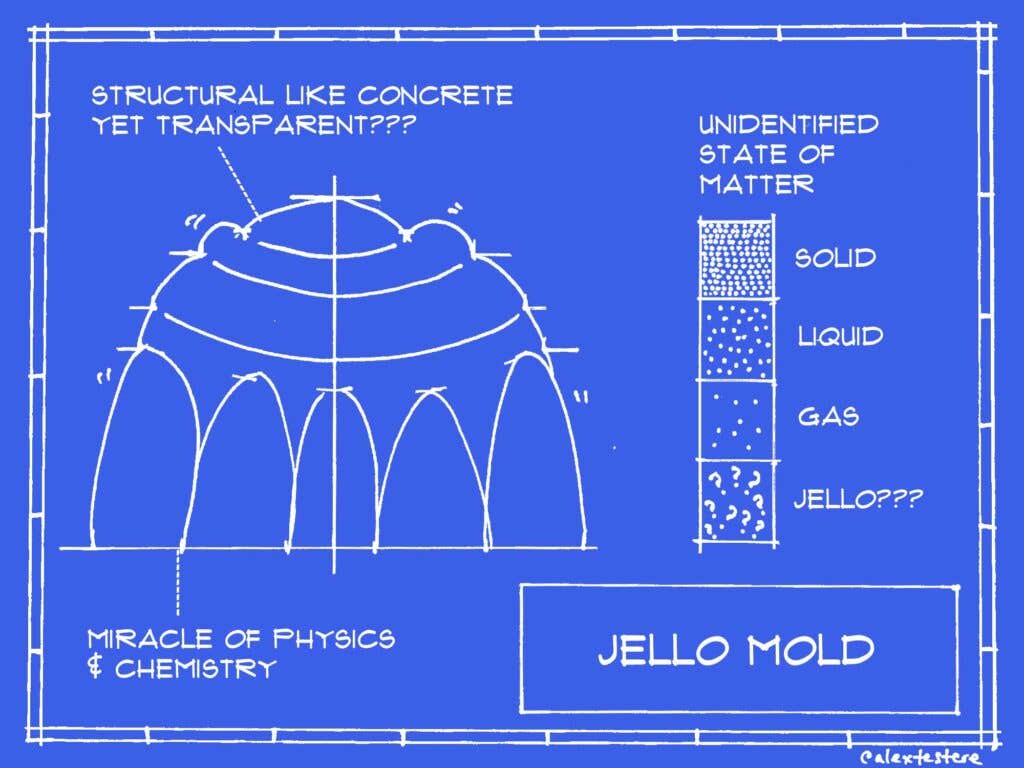
This marvel of retro Americana entails pouring Jell-O into a mold, firming it up in the fridge, unmolding it in a hot water bath, and serving it to the jiggling delight of all. If you’re lucky there might be stuff suspended in there too. “The thing is with Jell-O is that the more you add to liquid, the more structural integrity you have, but you want to hit that sweet spot,” says Migoya. “That jiggle is very important. Custards when they’re properly baked, that’s the texture of just enough gelatin. It’s all about that mouth feel—the moment you put it in your mouth, it will start melting. It was a solid two seconds ago and now it’s like you’re drinking water.”
The Architects Say
Biber: Jell-O is the closest thing to cast-in-place concrete that the dessert world has to offer. I don't think it qualifies as "pastry" because there is no dough involved, but I love a one-ingredient solution, something that can take on any form, color or consistency to be the go to, mono-material. It is also the fourth state of matter (solid, liquid, gas, and Jell-O). hovering in a state between liquid and solid, making it a miracle of physics and chemistry.
Jell-O is, and maybe always was, a harbinger of the future.
Zakrzewski: For me this is the most interesting medium. Jell-O as a material is one that is structural, like concrete, yet is see-through and allows you to suspend items within it. Also let's discuss the importance of using a mold to create a form, something we do a lot of in architecture. It's used for concrete form work, but in this case, it's edible.
Cronut™
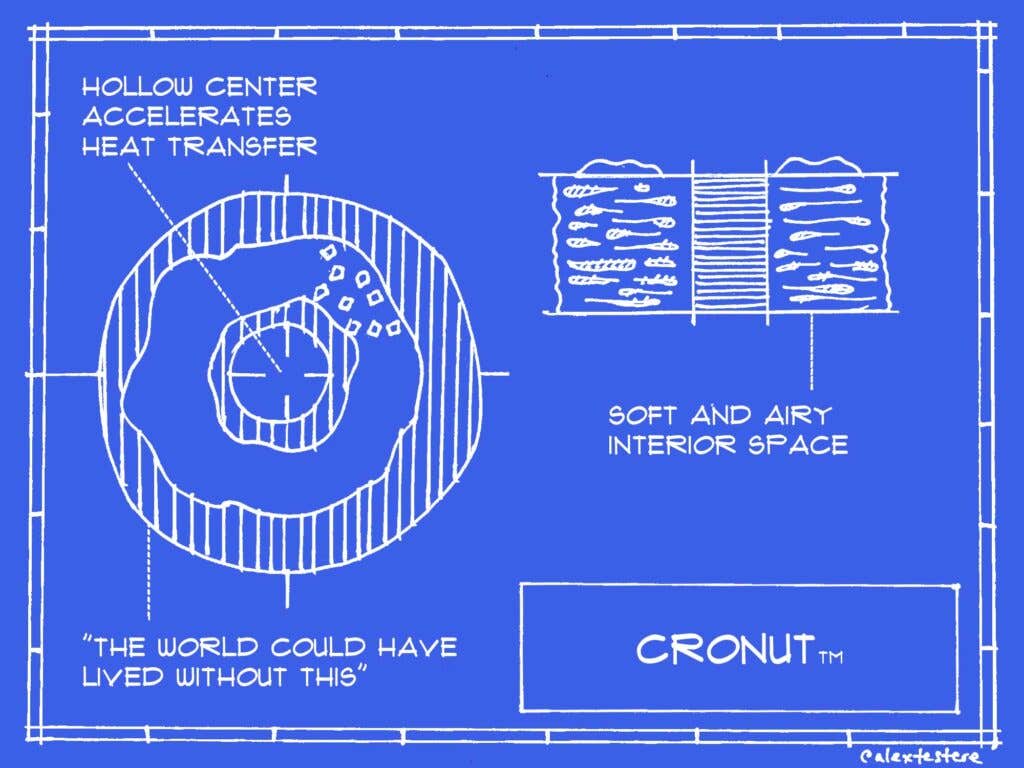
Pastry chef Dominique Ansel’s much-copied creation is croissant dough punched into a doughnut shape, deep-fried, piped with pastry cream and topped with glaze. “What’s important to realize about the Cronut™ is what’s important to realize about the doughnut,” says Migoya. “If you were to fry a disk of dough it would get over-fried on the outside and raw in the center. Same as with angel food and bundt cake—that center opening helps accelerate baking.”
The Architects Say
Biber: I have more self respect (barely) than to stand on a line for hours for a Cronut™, so I admit I have never had one. But that has never stopped me from having a strident opinion, so here it is: the Cronut™ is the "La La Land" of pastries—seems like a great idea on paper but really, is this the best of both worlds or the worst?
Like the new doughnut-shaped office tower in Guangzhou China, the Cronut™ seems like one of those pastries/buildings the world could have lived without. Sorry, but changing the shape of something is not necessarily a great stride in culture or the arts. The croissant is a genius of shape and taste; the ends are crunchy and the middle soft and airy.
What is next, doughnut-shaped hot dogs (to fit on a hamburger bun)? Round French fries (more efficient slicing of potato)? Some ideas have reached their natural pinnacle of evolution, and only a dystopian future will demand Darwinian change.
Hyde: The Cronut™ is an architecturally simple form—circular/oval with an opening at its center. This shape can be seen in the Greek and Roman amphitheaters of ancient times and continues as an archetype for sports arena's today. Apart from the the doughnut shape, it's not very architectural, but it tastes very good.
Baklava
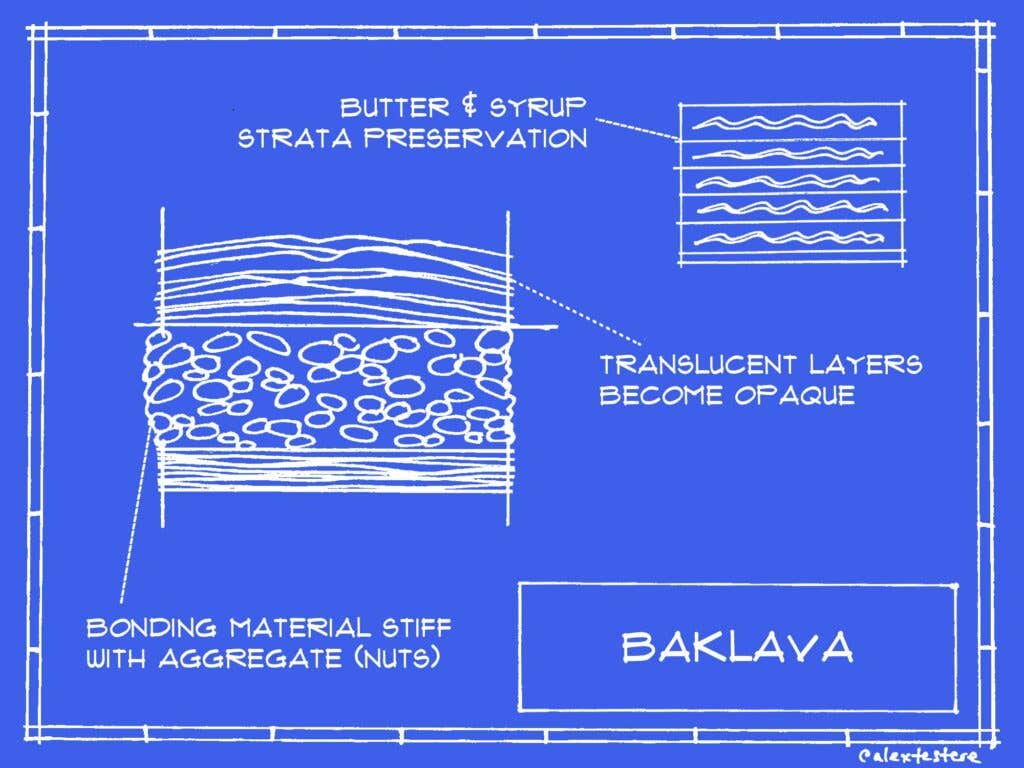
A pastry that layers dozens of clarified butter–brushed phyllo sheets with a filling of sweetened ground nuts. The whole thing is baked, then anointed with a sugar- or sugar-honey syrup and carved into diamond-shaped or rectangular pieces. Contrary to popular belief, the dessert, which countries from the Balkans to the Middle East claim as their own, should be crisp, not soggy. "With baklava, you want to use clarified butter or ghee, which is butter without the water, so you still get the buttery flavory without the moisture," says Migoya. "The crispiness quotient greatly increases that way."
The Architects Say
Deniz Seclimis: Each piece of baklava is like a delicate tower held together with butter and syrup. The stories are made up of thin translucent sheets built up at least 40 stories tall. Once assembled, the entire structure becomes opaque and is divided up like a neighborhood with its boundaries defined by its container. Round trays produce rows of trapezoidal towers typically radiating outward from the center. Square trays are sliced into regular rows, creating baklava neighborhoods.
Whether trapezoidal or rectangular, each building has a signature dome curved roof covered in a shower of syrup. The strata of each level are preserved through the process, and each little baklava building can be demolished floor by floor if you are patient, or with a great crunch if you are hungry and prefer the wrecking ball method.
Biber: This is why engineers shouldn't design buildings. Baklava is the structural engineer's reaction to ideas like mille-feuille; stiffen the bonding material with lots of aggregate (nuts) to provide a truly load-bearing item, with a rather brutish result. It's easy to hold up a lightweight "roof" with solid mass; the real trick is to do the opposite.
Baklava is regressive. Like mud-walled homes supporting thatched roofs, it is made to succeed with low-skilled labor and low-tech materials. While the result is delicious, just as the mud hut is effective, it lacks the daring to be called Art.
Keep Reading
Continue to Next Story



